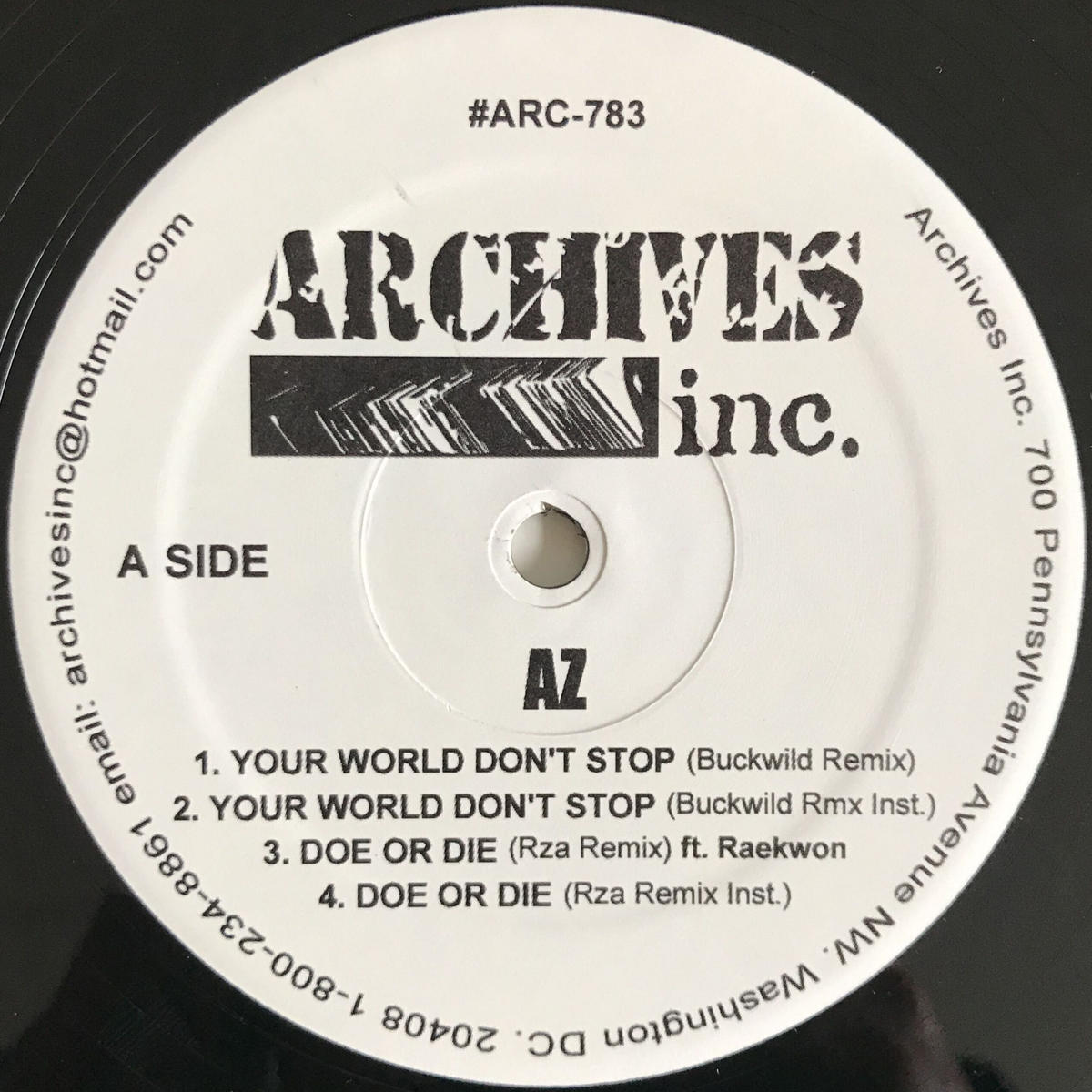Doe or Die is the debut studio album by rapper AZ, released October 10, 1995 on EMI Records. The album features guest appearances by artists such as Nas and Miss Jones, and production from Pete Rock, L.E.S., and Buckwild, among others. Nov 19, 2018 Az Doe Or Die Zip Zippyshare mediafire links free download, download AZ Doe Or Die, AZ Doe or Die, AZ Doe Or Die (1995) - az doe or die zip zippyshare mediafire files. Free Search Engine for Mediafire. Type what you are looking for in the box bellow, hit search and download it from mediafire.com! Aug 9, 2017 - AZ, in fact, first came to the.
By Anne Buckle
Most of the US state of Arizona does not use Daylight Saving Time (DST). The exception is the Navajo Nation.
With the exception of the Navajo Nation, Arizona does not set the clocks forward 1 hour in spring for DST with the rest of the United States.
Mountain Standard Time
Almost all of Arizona is on the same time zone, Mountain Standard Time (MST), all year. The time zone has a UTC offset of minus 7 hours (UTC-7).
It is also known as Mountain Time, but that term refers both to standard time and the time zone which is elsewhere used during DST: Mountain Daylight Time (MDT).
Navajo Nation Uses DST
The Navajo Nation, a semi-autonomous Native American territory, follows the United States DST schedule. It lies in northeastern Arizona, northwestern New Mexico, and southeastern Utah.
During DST the Navajo Nation, which includes the towns of Tuba City, Chinle, and Window Rock, sets the clocks forward 1 hour to Mountain Daylight Time (MDT), which is 6 hours behind UTC (UTC-6).
Az Doe Or Die Zip Line
No DST in Hopi Nation
A part of the Hopi Nation, which lies within the Navajo Nation, follows Arizona's no-DST rule. To confuse matters more, there is also an even smaller Navajo Nation territory within the Hopi Nation within the Navajo Nation. In addition to this, there is another Hopi area adjacent to the main Hopi Nation territory.
As a result, if driving the correct route from the Arizona state border through both Navajo and Hopi areas to the other side one can end up changing one's clock 7 times! For example: Tuba City (Navajo) and Moenkopi (Hopi) are only a couple of miles apart, but they have a 1-hour time difference during the summer. Jeddito (Navajo), in the middle of Hopi Nation territory, is 1 hour ahead of the surrounding areas during summer.
Opted out of DST
Arizona is exempt from DST according to the US Energy Policy Act of 2005. The Act gives every state or territory the right to decide if it wants to use DST. If DST is observed, the state has to schedule DST in sync with the rest of the US: From the second Sunday in March until the first Sunday in November.
Because of Arizona's hot climate, DST is largely considered unnecessary. The argument against extending the daylight hours into the evening is that people prefer to do their activities in the cooler evening temperatures.
War Time DST
Arizona used DST, along with the rest of the US, during World War I in an effort to conserve fuel for the war. Also known as War Time, DST was used in Arizona from March 31 to October 27, 1918.
At that time Arizona had 2 time zones. Communities in the far west of the state, near California, used Pacific Time while the rest of Arizona observed Mountain Time.
Added 1 Hour During World War I
The state capital Phoenix and most of Arizona added 1 hour to Mountain Standard Time (MST) to what today is known as Mountain Daylight Time (MDT). When the War Time period ended most of Arizona, including Phoenix, returned to MST.
The communities along the state’s western border added 1 hour to Pacific Standard Time (PST) and used what is known today as Pacific Daylight Time (PDT). These locations returned to PST again.
The next year, Arizona joined the rest of the country for War Time from March 30 to October 26, 1919. Like the year before, most of the state added 1 hour to MST, with the western border locations adding 1 hour to PST. The Yuma County communities in Arizona observed PDT from March 6, 1921 until October 30, 1921.
World War II

In 1942, during World War II, President Franklin Delano Roosevelt introduced another period of War Time, and on February 9, 1942, most of Arizona moved to Mountain War Time, again with the few western border communities observing Pacific War Time.
But, on January 1, 1944 when most of Arizona returned to MST, the western border communities remained on Pacific War Time, while railroads, airlines, bus lines, military personnel, and interstate commerce continued to use Mountain War Time in line with a federal law.

Emergency Law
On April 1, 1944, an emergency law was passed to establish Mountain Time and Pacific Time as the state’s time zones. The law stated that DST was to be used from April 1 to September 30. Federal offices and departments were exempt from the law. Since this law was an emergency measure, it became effective as soon as it was signed.
There is some uncertainty as to what happened next, but it seems that most of Arizona moved to Mountain War Time (equivalent to Mountain Daylight Time) on March 17, 1944, even though the law indicates that the state was to remain on Mountain Standard Time until April 1, 1944, before changing to Mountain War Time.

Return to Standard Time
On October 1, 1944, most of Arizona returned to Mountain Standard Time (MST), while most of the Mohave County region changed to Pacific Standard Time (PST). Most parts of the state remained on MST until the mid-1960s.
In 1966, the US Congress passed the Uniform Time Act, which set a schedule for DST. It was still up to local jurisdictions to decide if DST was to be used. In 1967, Arizona observed DST from the last Sunday of April to the last Sunday of October. On October 29 that year, it followed the rest of the country in returning to standard time. From that point onwards, most parts of the state remained on MST.
DST Unpopular in Arizona
The DST trial in 1967 provoked so many negative reactions that DST was never used again. People in Arizona, including many businesses, farming communities, and parents, preferred to remain on Mountain Standard Time throughout the year claiming that DST produced no benefits for them.
Most people believed that DST was not necessary given Arizona's hot climate, and cooler evenings were a benefit.
However, some businesses operating interstate complained that they had to keep reminding other states that Arizona doesn't have DST.
Arizona on MST, Not PDT
There is a common misconception that Arizona is on Pacific Daylight Time (PDT) during the summer and on Mountain Standard Time (MST) during the winter. Because MST and PDT have the same UTC offset of minus 7 hours (UTC-7), Arizona has the same local time as neighboring states California and Nevada during the summer season.

Although the time is the same, Arizona uses standard time (MST) all year. “Daylight” time zones, such as MDT, are mostly used for areas that switch to DST every year.

DST in the US
Hawaii is the only US state that does not use DST at all.
Az Doe Or Die Zip
None of the US dependencies observe DST. This includes American Samoa, Guam, Puerto Rico, Northern Mariana Islands, the US Minor Outlying Islands, and the US Virgin Islands.